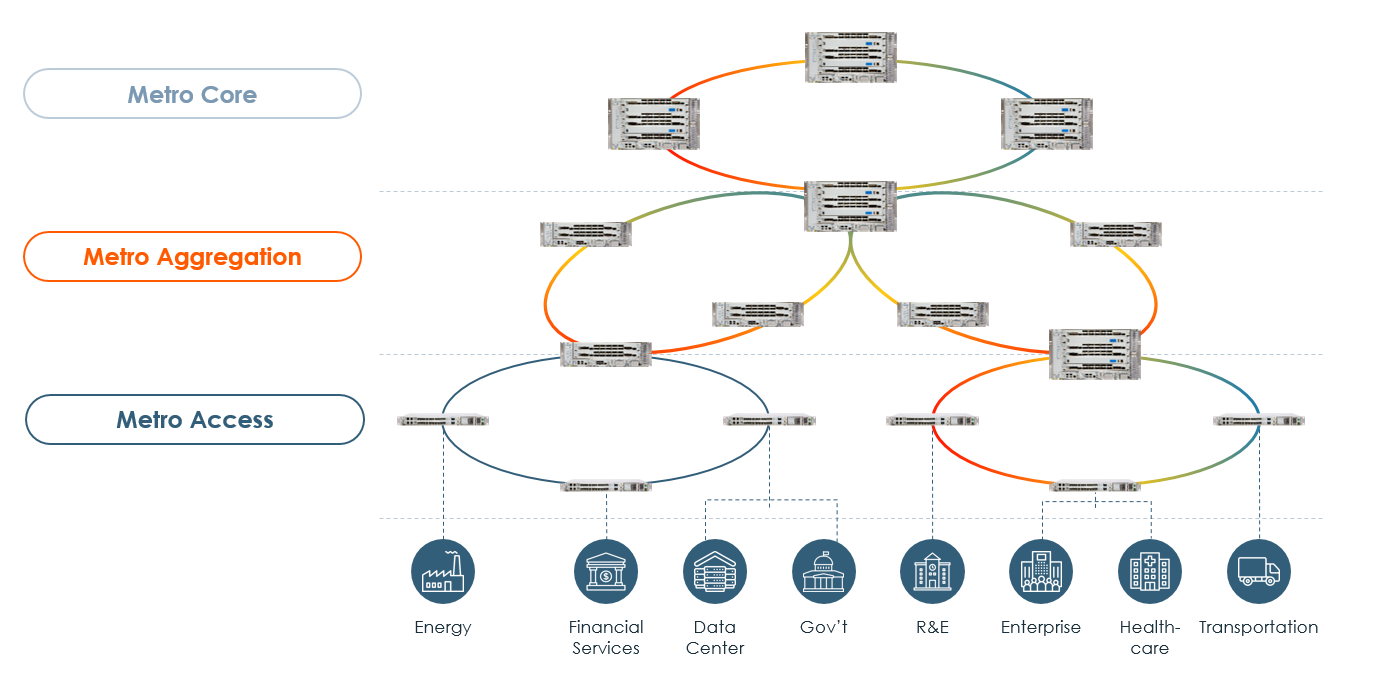- Solutions
Solutions
Discover how we empower your network through a flexible choice of Optical transport, Access and Software defined technologies. Browse through our dedicated use cases to find out more.
- Products & Services
Products & Services
A full suite of products and services to address your network needs for today and tomorrow.
- Company
Company
Find out all you need to know about the foundation of Ekinops, the company empowering next-generation networks.
Transport-as-a Service: A New Model for Generating Revenue from Your WDM Network
Optical Transport
Transport-as-a Service: A New Model for Generating Revenue from Your WDM Network
Coherent WDM technology provides massive bandwidth at the optical layer with the ability to carry hundreds of gigabits per second on a single wavelength across thousands of kilometers. Used to boost the capability of the transport network, coherent WDM is largely viewed as a static infrastructure technology and treated as a sunk cost of operations.
But what if it didn’t have to be that way?
What if there was a mechanism for making the optical layer more flexible and extensible and transform it into a revenue-generating network in its own right, just like the packet network that rides on top of it?
Using Optical Transport Networking (OTN) technology gives WDM the service attributes it needs to enable Layer 1 service delivery directly from the optical network. OTN certainly isn’t new having been used in core switching nodes for many years now, but the new generation of OTN devices based on the latest chipset technology has expanded the number of use cases for it. With a compact form factor as small as 1RU as opposed to the half-rack systems of generations past, OTN can now break out of the network core and move all the way to the metro aggregation point and even the metro access edge where it can connect directly to customer networks.

Figure: TaaS Compact OTN Deployment
OTN provides a number of capabilities and benefits that can transform the optical network from being purely an infrastructure element to a new service delivery model, enabling the transport capacity itself to become the service — i.e., Transport-as-a-Service (TaaS).
- Virtualization: ODUk containers allow each client service to remain physically isolated from all others on the same wavelength so that they can be independently switched, monitored and managed (and billed!) the same way as packet services
- Determinism: OTN is more connection oriented than Ethernet or IP packets meaning you get the deterministic performance with near-zero latency that Layer 1 provides for which you can charge while providing a stringent SLA
- Security: As a Layer 1 technology, OTN is inherently more secure than IP. For highly security-sensitive customers, encryption can be added on as a premium service
- Rapid service provisioning: OTN switching capability at the edge of the service provider network provides the ability to connect a client to any port without having to build dedicated facilities to the customer premise and there’s no service activation testing such as RFC 2544 or Y.1564 required so it’s faster and simpler to roll out
- Multi-protocol support: OTNs asynchronous nature enables multi-protocol client support for both packet and TDM traffic while its ODUk hierarchy provides right-sized containers for any client rate from 1Gbps to 400Gbps with efficient multiplexing to maximize the utilization of the WDM capacity
- Flexibility: ODUflex — one of the new OTN capabilities made possible by the latest generations of the technology — allows a service provider to meet individual customers demands even for non-standard data rates (i.e., rates between 1G, 10G and 100G) by combining any arbitrary number of ODU0s (1.25Gbps) to create a connection of virtually any size
Of course there will always be a high demand for packet-based Layer 2 Ethernet and Layer 3 IP services for the utility they bring, but Layer 1 services can play an important part in serving those end users who simply want to connect their own routed or switched networks in different locations with as little complexity and latency as possible. While wavelength services are available, they’re typically only used by big customers—large enterprises, universities, federal governments, etc.—that have a high amount of traffic and can justify the cost of leasing an entire wavelength. Customers with lower connectivity needs are left to select from the variety of packet services available, trying to balance their needs of throughput, performance, security, availability and cost to select the right one.
With a TaaS model, service providers and carriers can now more effectively leverage their WDM networks to provide a new level of high performance connectivity service such as Layer 1 Private Lines and Optical Virtual Private Networks (OVPNs) that were simply not possible before.




